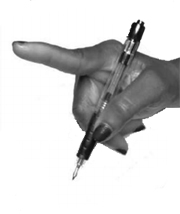SCALENUS ANT, POST & MEDIAL SPLENIUS CAPITIS SPLENIUS CERVICIS
- Origin: posterior tubercles of transverse processes of first,second, third, and fourth cervical vertebrae (C1, 2, 3, 4).
- The transverse process attachment of the levator scapulae is anterior to the transverse process attachment of the splenius cervicis and directly superficial (posterior) to the transverse process attachment of the scalenes.
- Insertion: superior part of medial border of the scapula
- Action: acts mainly on the neck inducing a homolateral rotation and lateroflexion1
Inferior portion of levator scapulae is covered by trapezius.

Muscle is shown lying deep to trapezius, and immediately ventral to splenius cervicis and splenius capitis.

 |
 |
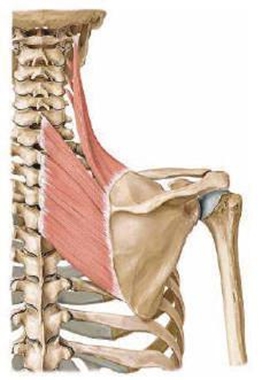 |
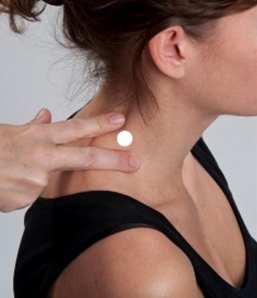 |
|
Figure 3. Trajectory of approach and relationships of the surrounding muscles to Levator Scapulae
|
|
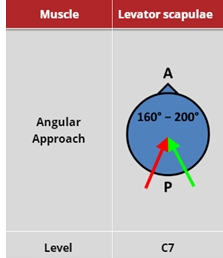 |
 |
(vv)levator scapulae.mp4(tt)
The muscle is typically injected just ventral to the border of trapezius; if there insufficient activation, ask the patient to elevate their shoulder.
This muscle is organized in four bundles inserted onto the transverse processes of C1, C2, C3 and C4. These bundles are visible in ultrasonographic images and can be injected selectively with botulinum toxin to act at a given vertebral level.
(Note that the transverse process of the atlas (C2) is easily palpable just posterior to the posterior border of the ramus of the mandible, directly inferior to the ear, and directly anterior to the mastoid process of the temporal bone.)
The largest part of the levator scapulae muscle, where the four bundles meet, is located at the muscle's insertion into the medial border of the scapula. Injecting at this site affects the muscle globally and needs a careful approach because of the risk of hitting the pulmonary apex and causing a pneumothorax.
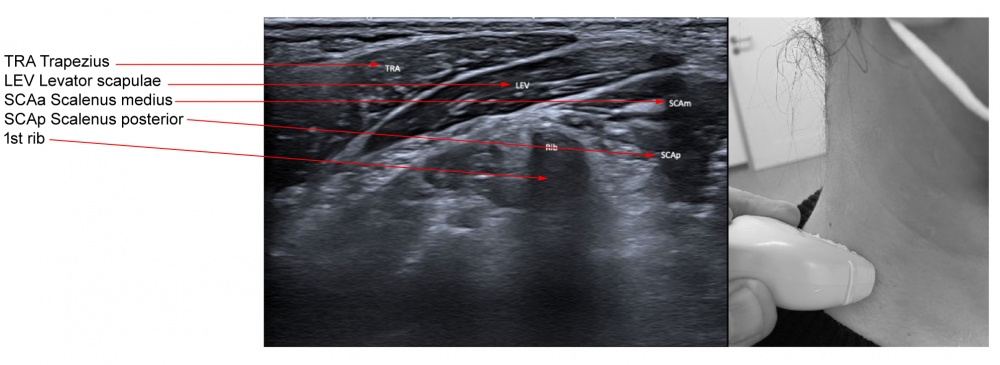
From: Fietzek UM, Nene D, Schramm A, Appel-Cresswell S, Košutzká Z, Walter U, Wissel J, Berweck S, Chouinard S, Bäumer T. The Role of Ultrasound for the Personalized Botulinum Toxin Treatment of Cervical Dystonia. Toxins (Basel). 2021 May 20;13(5):365.

From: Fietzek UM, Nene D, Schramm A, Appel-Cresswell S, Košutzká Z, Walter U, Wissel J, Berweck S, Chouinard S, Bäumer T. The Role of Ultrasound for the Personalized Botulinum Toxin Treatment of Cervical Dystonia. Toxins (Basel). 2021 May 20;13(5):365.
-
Origin:
Anterior: anterior tubercles of transverse processes of third to sixth cervical vertebrae (C3–6).
Middle: transverse processes of second to seventh cervical vertebrae (C2–7).
Posterior: posterior tubercles of transverse processes of fourth to sixth cervical vertebrae (C4–6). -
Insertion:
Anterior: scalene tubercle and upper surface of first rib.
Middle: upper surface of first rib, behind groove for subclavian artery.
Posterior: upper surface of second rib. -
Action:
Acting on both sides: flex neck; raises first or second rib during active respiratory inhalation.
Acting on one side: tilts neck to the same side, and rotates head.
 |
 |
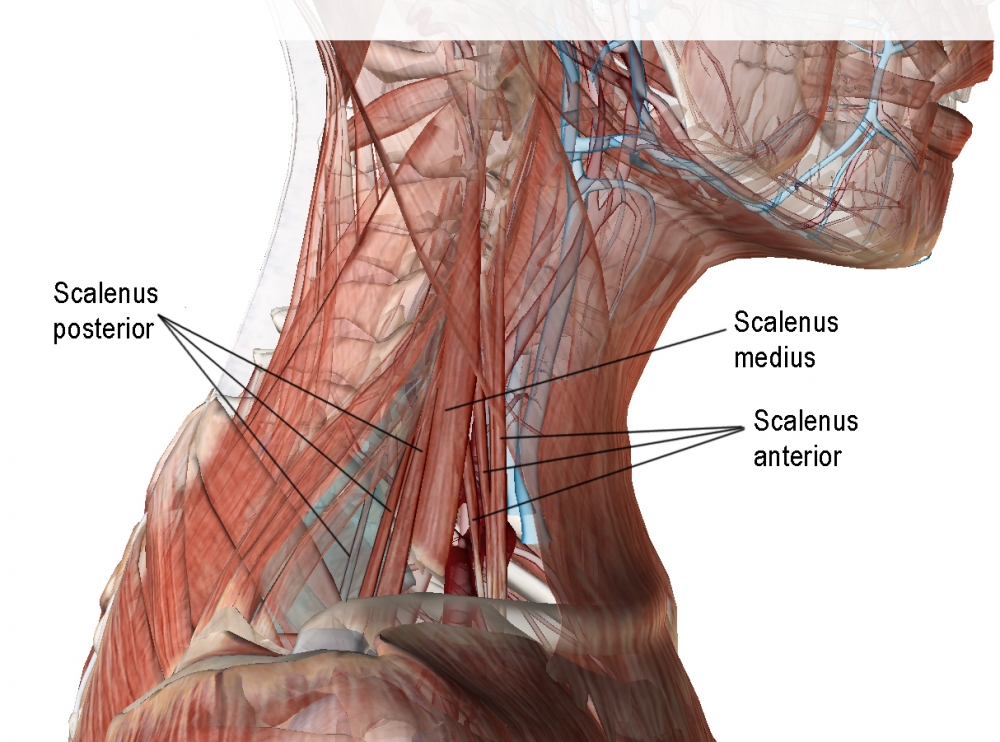 |
 |
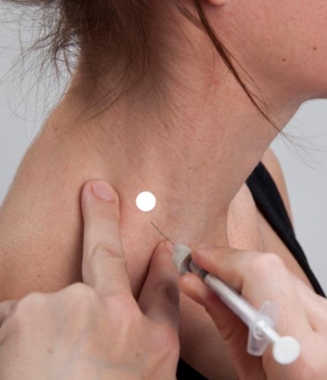 |
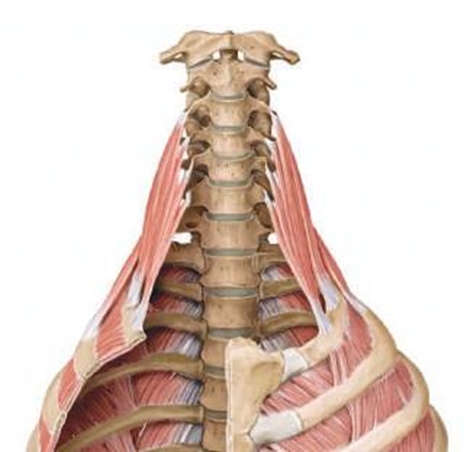 |
|
Figure 7. Trajectory of approach and relationships of the surrounding muscles to scalenus
|
|
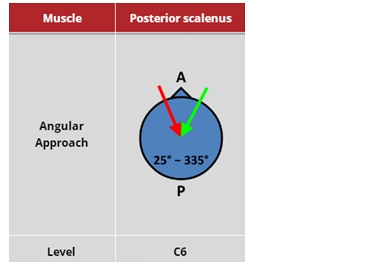 |
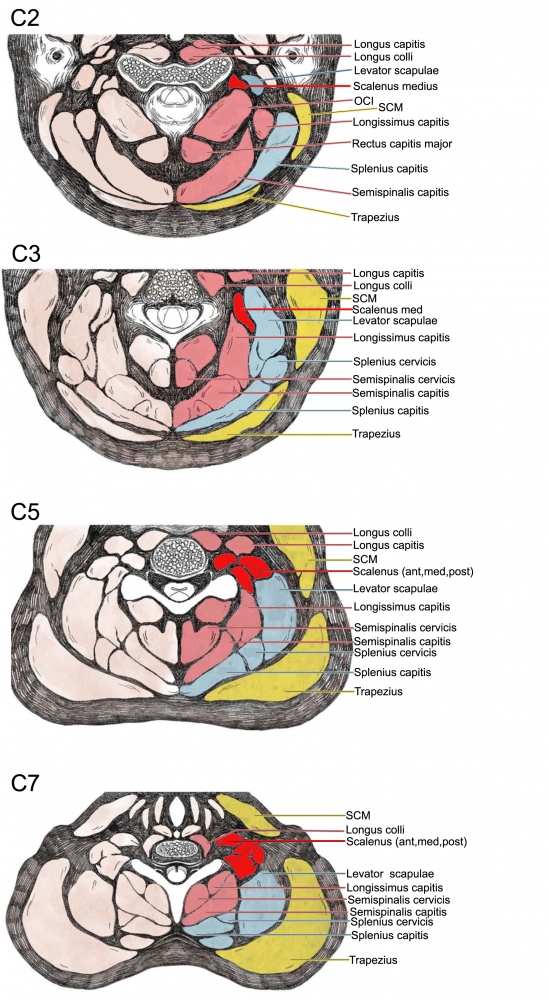 |
(vv)Post Scalenus.mp4(tt)
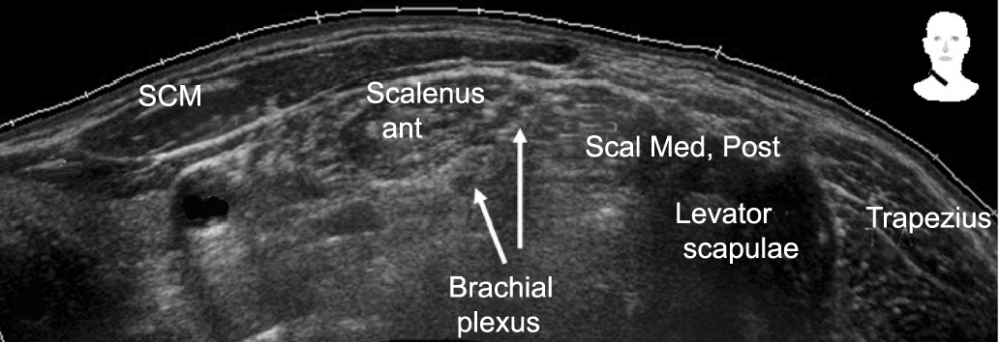
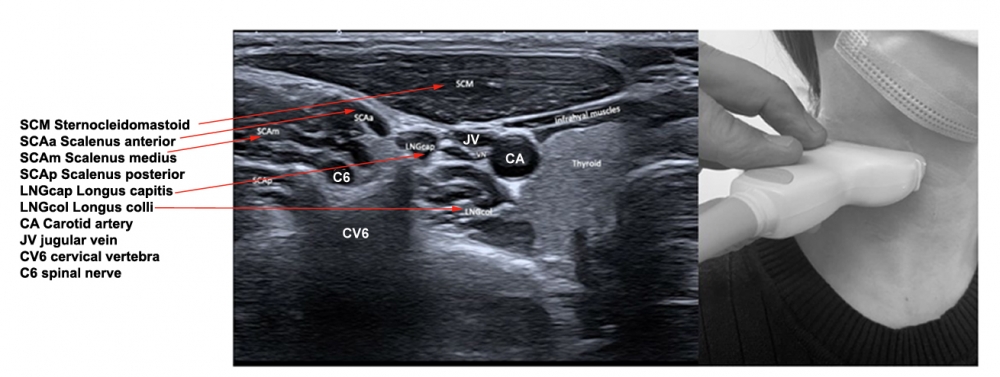
From: Fietzek UM, Nene D, Schramm A, Appel-Cresswell S, Košutzká Z, Walter U, Wissel J, Berweck S, Chouinard S, Bäumer T. The Role of Ultrasound for the Personalized Botulinum Toxin Treatment of Cervical Dystonia. Toxins (Basel). 2021 May 20;13(5):365.
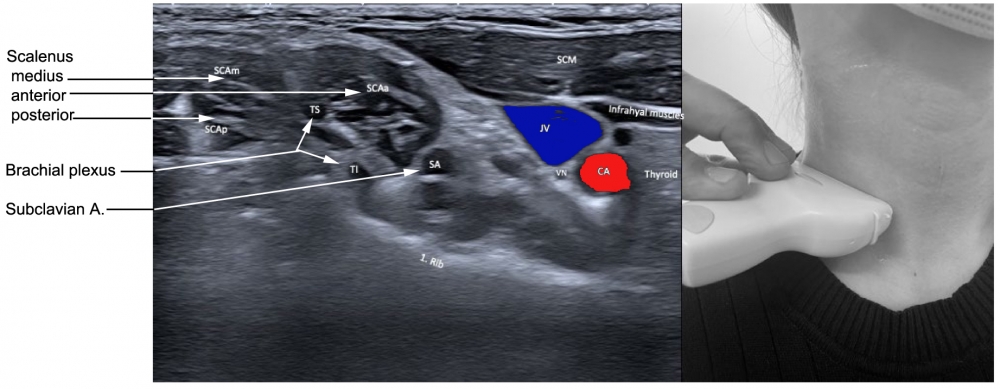
From: Fietzek UM, Nene D, Schramm A, Appel-Cresswell S, Košutzká Z, Walter U, Wissel J, Berweck S, Chouinard S, Bäumer T. The Role of Ultrasound for the Personalized Botulinum Toxin Treatment of Cervical Dystonia. Toxins (Basel). 2021 May 20;13(5):365.

From: Fietzek UM, Nene D, Schramm A, Appel-Cresswell S, Košutzká Z, Walter U, Wissel J, Berweck S, Chouinard S, Bäumer T. The Role of Ultrasound for the Personalized Botulinum Toxin Treatment of Cervical Dystonia. Toxins (Basel). 2021 May 20;13(5):365.
-
Origin: spinous processes of seventh cervical vertebra (C7) and upper three or four thoracic vertebrae (T1–4)
-
Insertion: posterior aspect of mastoid process of temporal bone. Lateral part of superior nuchal line, deep to attachment of sternocleidomastoid.
-
Action:
Acting on both sides: extends head and neck.
Acting on one side: tilts neck to the same side; rotates head to same side as contracting muscle (ipsiversion).
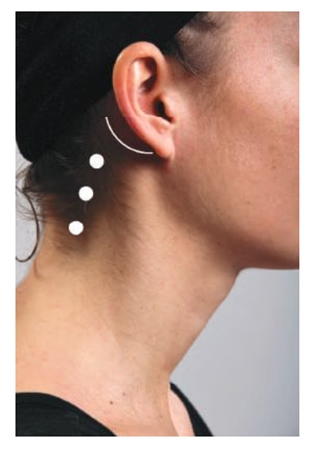
|
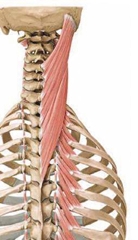 |
|
Figure 10. Trajectory of approach and relationships of the surrounding muscles to Splenius capitis
|
|
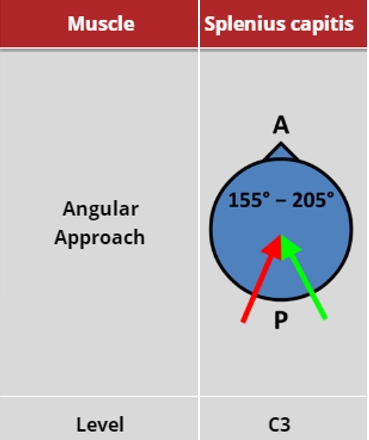 |
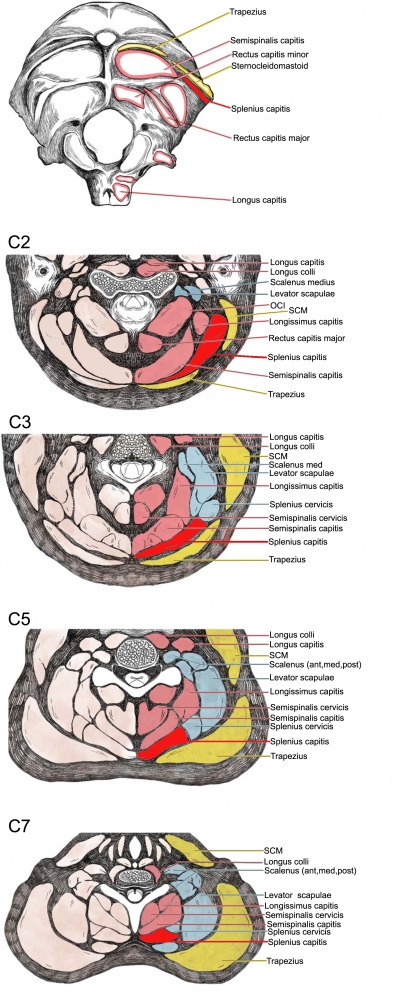 |


From: Fietzek UM, Nene D, Schramm A, Appel-Cresswell S, Košutzká Z, Walter U, Wissel J, Berweck S, Chouinard S, Bäumer T. The Role of Ultrasound for the Personalized Botulinum Toxin Treatment of Cervical Dystonia. Toxins (Basel). 2021 May 20;13(5):365.
(vv)Splenius.mp4(tt)
 |
 |
-
Origin: spinous processes of third to sixth thoracic vertebrae (T3–6).
-
Insertion: posterior tubercles of transverse processes of upper two or three cervical vertebrae (C1–3).
-
Action: (together with splenius capitis)
Acting on both sides: extend head and neck.
Acting on one side: tilts neck to the same side; rotates head to same side as contracting muscle (ipsiversion).
 |
|



